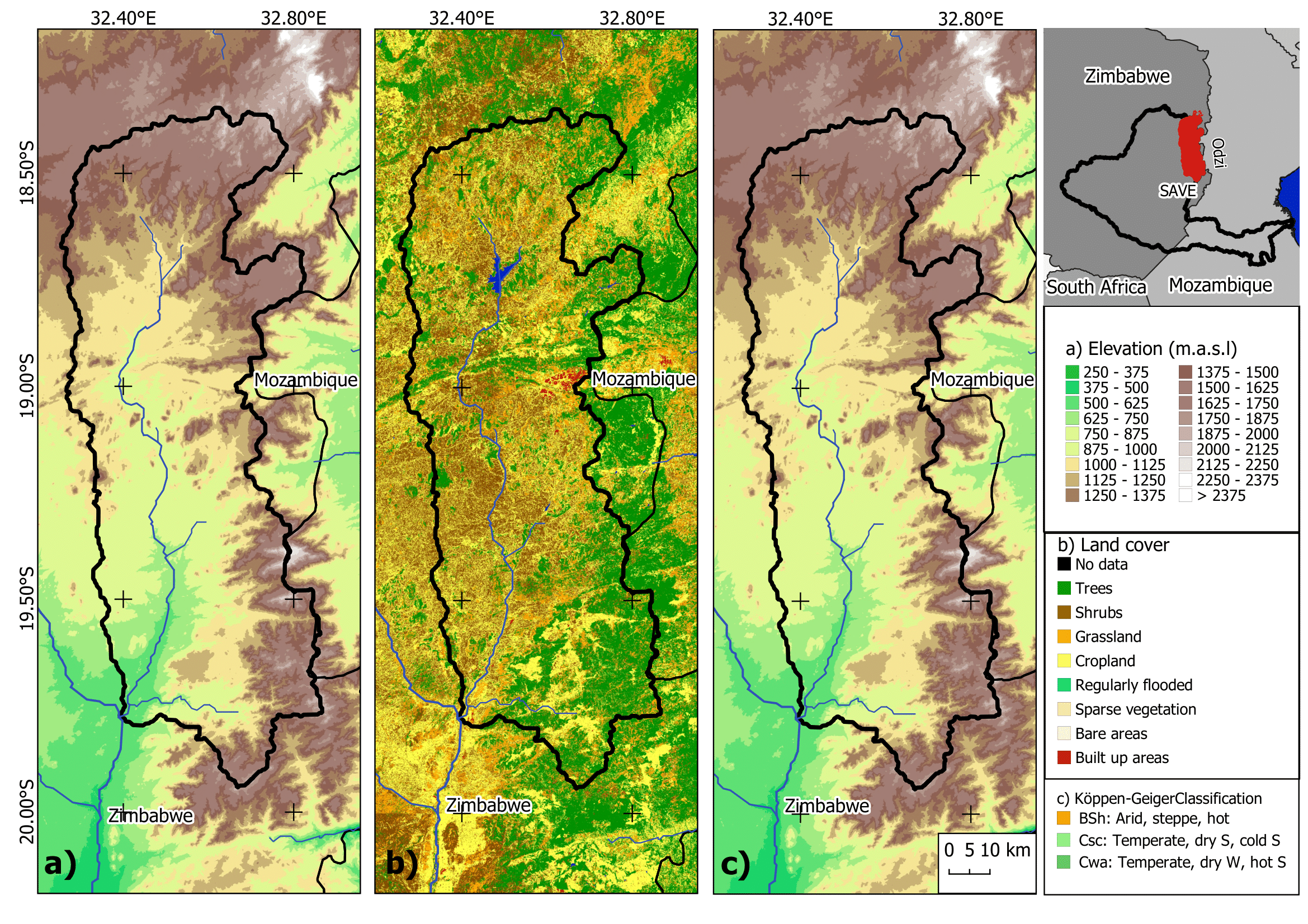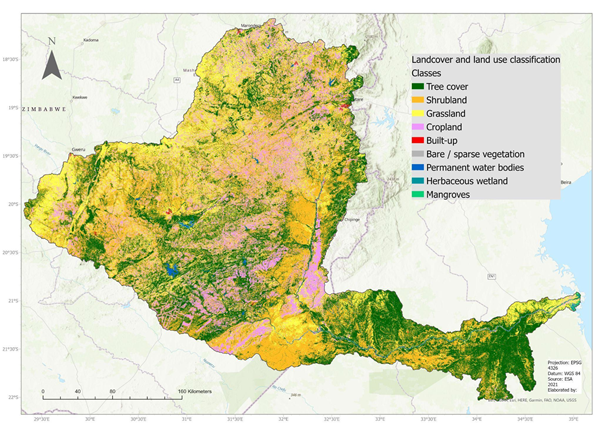Save river basin - Socio-economic development
A closer look into Save's study areas
There are two pilot study areas, considered within the scope of the OWASA project for the Save basin (Nyoni et al., 2013).
Chimanimani is a district in the Manicaland Province in the southeast of Zimbabwe's Highlands. In the east, the district borders Mozambique. The total population is 1,752,698 people, and the district spans around 3,352 km². Moreover, two catchment areas lie within its administrative boundaries: The Save River and the Budzi River catchment (Chingombe & Musarandega, 2021).
As for the other study level, the Odzi sub catchment is found in the eastern mountainous areas of Zimbabwe. The Odzi river is a perennial river that rises in the Eastern Highlands and flows to the south before feeding the Save River.
The following figure is a detailed reference for the Odzi subcatchment, in terms of Elevation, Land Cover and Climate classification.

Land Cover
The land cover and land use classification for 2021 at 10 m spatial resolution, obtained from the detection algorithm using Sentinel 1 and Sentinel 2 global data developed by the European Space Agency, is shown in the map below (Zanaga et al., 2022).

Economic Sectors
In the communal areas, farming is carried out on a much more intensive basis. This includes crops such as maize, rapocko and sorghum, together with cattle settings. The mountain parts of the catchment are mainly used for forestry and there are big plantations of pines and gum trees. Agricultural developments have installed irrigation systems such as canals extracting water from the rivers (Nyoni et al., 2013).
(Chipangura, 2019) studied the organization developments in the gold mining sector in Zimbabwe, for artisanal and small-scale mining, and estimated that as many as two million people across the country derive their livelihoods from this activity.
Areas within the Odzi sub catchment have a mixture of communal lands, commercial farms and forests, where commercial areas include extensive irrigated farmland, mainly for tobacco during the rainy season and wheat during the dry season, generally in tandem with cattle (Nyoni et al., 2013).
References:
Chipangura, N. (2019). “We are one big happy family”: The social organisation of artisanal and small scale gold mining in Eastern Zimbabwe. The Extractive Industries and Society, 6(4), 1265–1273. https://doi.org/10.1016/j.exis.2019.08.001
Nyoni, K., Kaseke, E. y Shoko, M. (2013). Assessing the Presence or Absence of Climate Change Signatures in the Odzi Sub-Catchment of Zimbabwe. American Journal of Climate Change, 02(04), 225–236. https://doi.org/10.4236/ajcc.2013.24023
Zanaga, D., van de Kerchove, R., Daems, D., Keersmaecker, W. de, Brockmann, C., Kirches, G., Wevers, J., Cartus, O., Santoro, M., Fritz, S., Lesiv, M., Herold, M., Tsendbazar, N.-E., Xu, P., Ramoino, F. y Arino, O. (2022). ESA WorldCover 10 m 2021 v200. https://zenodo.org/record/7254221#.Y6xTHofMI2x https://doi.org/10.5281/zenodo.7254221

